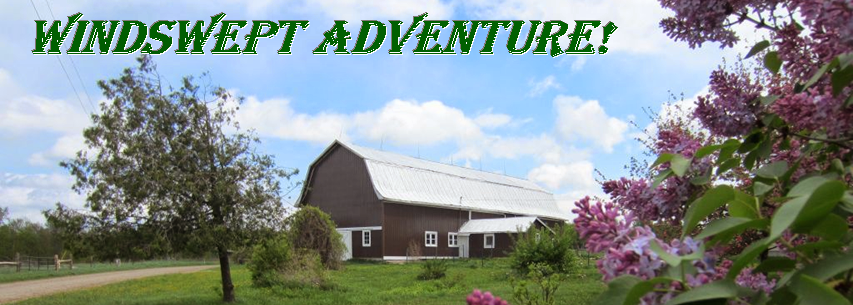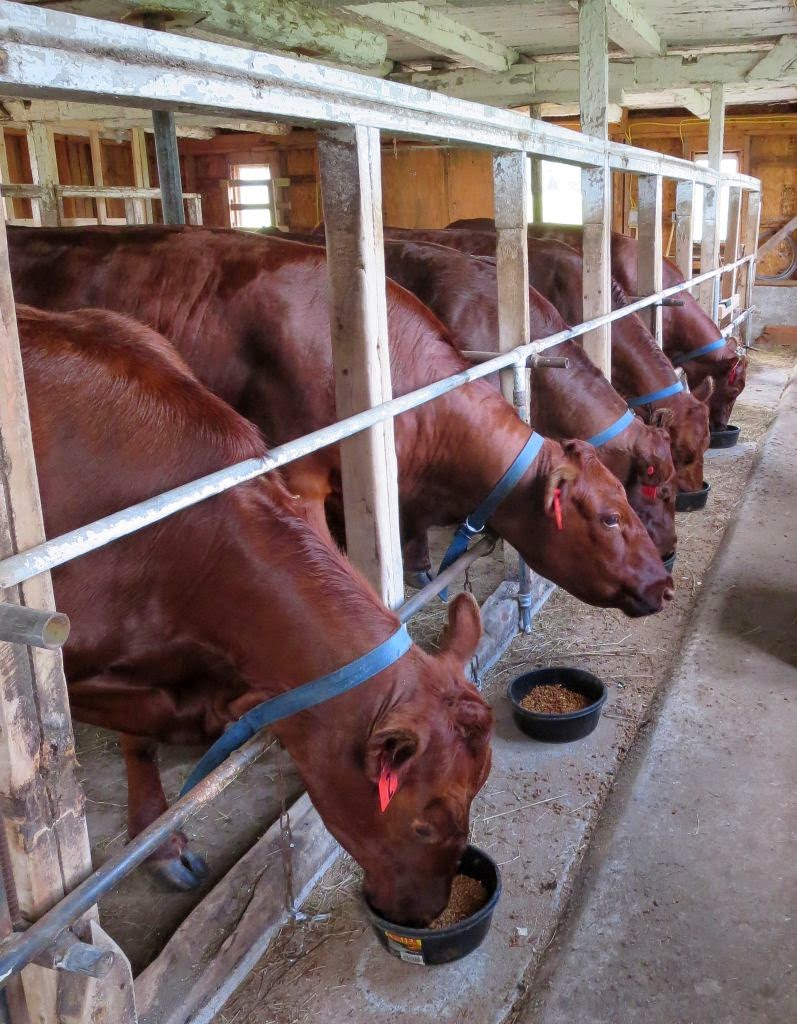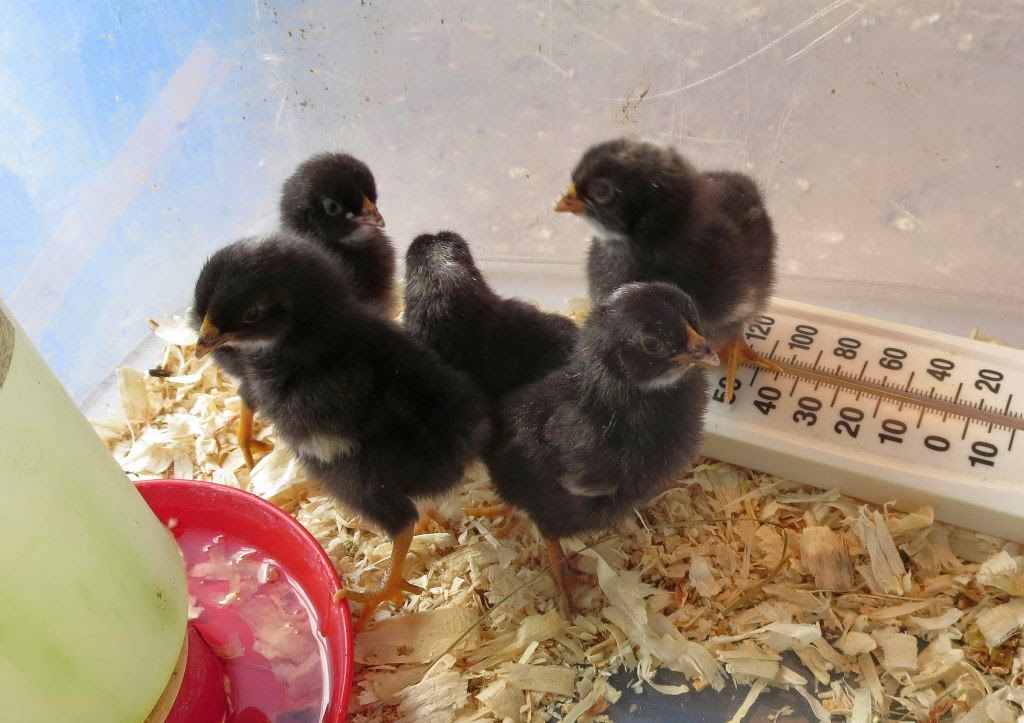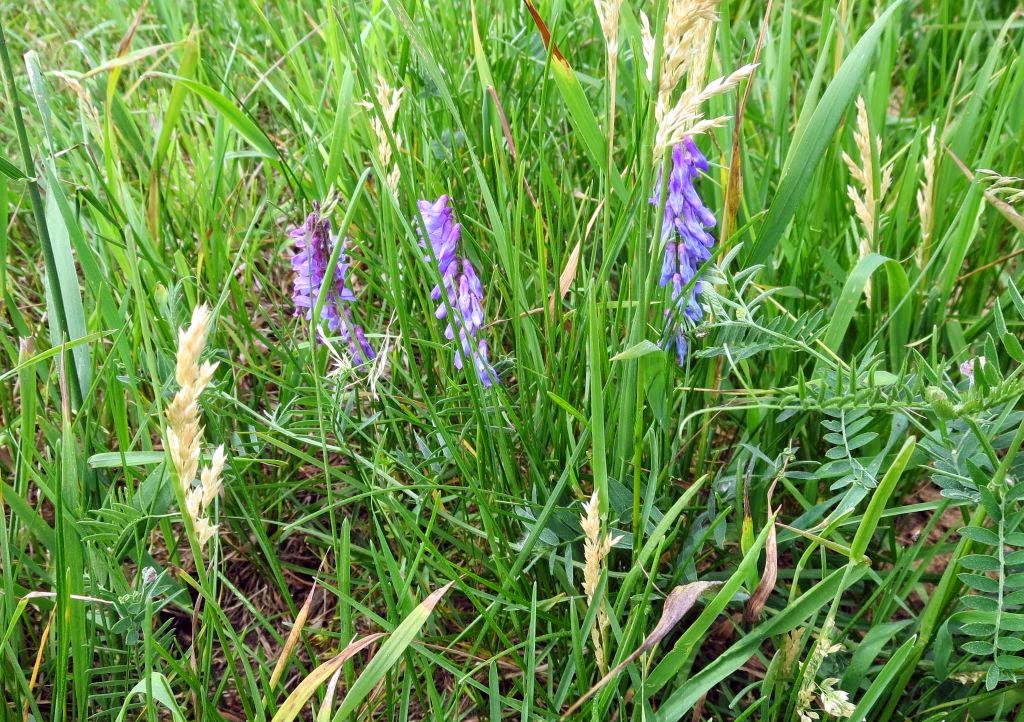I'd reached one of several areas full of antique tractors:
This little boy was allowed to sit on quite a number of them, making tractor noises and pretending to drive them. I imagined that this was the highlight of the museum for him. And I enjoyed watching him have so much fun:
An unusual John Deere:
There were also old pickup trucks galore. Scouts, such as this one, were made by International Harvester from 1961 to 1980 and I remember seeing lots of them back in the day:
I don't know what kind of truck this was, but it sure was an old timer:
Miller's Garage in North Lawrence (right near me) had rebuilt this classic:
Lots of old trucks:
This old schoolhouse had been moved from its original site to the museum grounds. The exterior had been restored:
But there was lots of work yet to do inside. There were signs up, seeking volunteers for work days to begin restoration on the interior of the school house:
The original slate boards and the once ubiquitous painting of George Washington had been preserved and will someday be back in place in the completely restored old schoolhouse:
An old El Camino. Remember them?
And - oops, I don't know what this was, but it sure was a beauty. And yet there was still lots more to see at the Power And Equipment Museum. I'll post Part 4 tomorrow:
Monday, June 30, 2014
Sunday, June 29, 2014
St. Lawrence Power And Equipment Museum - Part 2
My next stop was the rebuilt sugar house. There was an antique boiler inside and a concession stand for maple flavored products, including cotton candy:
They had disassembled, moved and rebuilt an antique grain barn and a corn crib:
Pony pulling contests had commenced and I arrived just in time to watch several teams compete:
A couple of teams pulled the concrete weights the full distance and a couple of teams could get only a foot or two:
This fellow was having difficulty hooking the ponies to the weights, being cautious not to lose his hand in the process. The ponies made several false starts before they finally got to make their pull:
There was a flat bed completely filled with perfectly reproduced, miniature farm equipment - two rows of it. I never did find out what it was for, though:
And a rubber wheeled train which surely must have transported tourists at some former attraction. It was being used here only as a stationary exhibit, however:
This 40 horsepower, portable steam engine was built in 1922 and owned by the St. Lawrence County Highway Department until 1983, when it was sold to the museum for one dollar:
This was called a railroad speeder or crew car, and used by track inspectors to move quickly to and from work sites:
This diesel, 100 horsepower engine was part of the operations of a cheese box factory in nearby Heuvelton, New York. A sign noted that it weighed 30,000 pounds:
More of the mystery machines which I've been seeing all over the county. I have been told that they are old wheat threshers, and were used, before combines, to separate grain from the straw:
It was no surprise to find antique tractors, but the quantity of them was nothing short of amazing. This beauty was an International Harvester, 1948 Farmall. And yet there was still much to see at the Power and Equipment Museum, so I'll post Part 3 tomorrow:
They had disassembled, moved and rebuilt an antique grain barn and a corn crib:
Pony pulling contests had commenced and I arrived just in time to watch several teams compete:
A couple of teams pulled the concrete weights the full distance and a couple of teams could get only a foot or two:
This fellow was having difficulty hooking the ponies to the weights, being cautious not to lose his hand in the process. The ponies made several false starts before they finally got to make their pull:
There was a flat bed completely filled with perfectly reproduced, miniature farm equipment - two rows of it. I never did find out what it was for, though:
And a rubber wheeled train which surely must have transported tourists at some former attraction. It was being used here only as a stationary exhibit, however:
This 40 horsepower, portable steam engine was built in 1922 and owned by the St. Lawrence County Highway Department until 1983, when it was sold to the museum for one dollar:
This was called a railroad speeder or crew car, and used by track inspectors to move quickly to and from work sites:
This diesel, 100 horsepower engine was part of the operations of a cheese box factory in nearby Heuvelton, New York. A sign noted that it weighed 30,000 pounds:
More of the mystery machines which I've been seeing all over the county. I have been told that they are old wheat threshers, and were used, before combines, to separate grain from the straw:
It was no surprise to find antique tractors, but the quantity of them was nothing short of amazing. This beauty was an International Harvester, 1948 Farmall. And yet there was still much to see at the Power and Equipment Museum, so I'll post Part 3 tomorrow:
Saturday, June 28, 2014
St. Lawrence Power And Equipment Museum - Part 1
I'd been hearing and reading about the Power Equipment Museum in the town of Madrid but learned that it is only open the 2nd and 4th Saturdays, June through October. So I picked a Saturday, drove to Madrid, parked my car and headed for this big, modern barn:
Old time equipment was parked outside, around the doors to the barn. This, I think, was a corn planter:
And a fire department pumper:
Inside, there were so many machines, wagons, etc. that it was hard to know where to begin. This was labelled as a shucker - for corn, I assume:
Antique harrows. Please leave a comment if I misidentify something:
OK, I didn't see any sign and I can't even take a guess at what this was:
An old buckboard:
An oil tanker:
Antique buggies:
And sleighs for winter. This is, after all, real snow country:
A manure spreader:
A more modern manure spreader. These were only a few of the many exhibits in the first barn and there was much more to see, so I left the building and continued my walking tour. I'll post Part 2 tomorrow:
Old time equipment was parked outside, around the doors to the barn. This, I think, was a corn planter:
And a fire department pumper:
Inside, there were so many machines, wagons, etc. that it was hard to know where to begin. This was labelled as a shucker - for corn, I assume:
Antique harrows. Please leave a comment if I misidentify something:
OK, I didn't see any sign and I can't even take a guess at what this was:
An old buckboard:
An oil tanker:
Antique buggies:
And sleighs for winter. This is, after all, real snow country:
A manure spreader:
A more modern manure spreader. These were only a few of the many exhibits in the first barn and there was much more to see, so I left the building and continued my walking tour. I'll post Part 2 tomorrow:
Friday, June 27, 2014
Update On The Red Poll Girls
What's new with the cows? Well, they shed their muddy brown, winter coats and began looking red again, glistening in the sun:
They've spent time in the north field and the south field. They're now being kept out of the north field, though, so the grass can grow as much as possible before haying:
The five of them are drinking as much as 300 gallons of water a day:
And they fraternize with the chickens:
I included this "rear end" photo to illustrate the whitish tail switch, a Red Poll breed characteristic and a quick way to tell them from Red Angus:
They have been nicer to each other this summer, with much less quibbling and struggling for dominance. Maybe that's because they finally settled the social hierarchy or maybe that's because they're so very well fed:
"Wanna see what's in my mouth? It's a grass soufflé, and I'll bet you wish you had some:"
The biting flies (of several kinds) became problematic and I felt so sorry for the cows that I got a pour-on fly repellent which helped a great deal:
The girls still get a bowl of grain every day. They don't need it, but it helps keep them tame and gives me a way to call them into the barn for the vet or artificial insemination technician:
Some cows prefer the shade on a summer afternoon:
But other cows prefer to bake in the sun:
They all like to graze in the lush, green fields. They apparently don't eat the buttercups, though. That's a good thing, if I can trust what I read on the internet, as buttercups are not good for them:
They've spent time in the north field and the south field. They're now being kept out of the north field, though, so the grass can grow as much as possible before haying:
The five of them are drinking as much as 300 gallons of water a day:
And they fraternize with the chickens:
I included this "rear end" photo to illustrate the whitish tail switch, a Red Poll breed characteristic and a quick way to tell them from Red Angus:
They have been nicer to each other this summer, with much less quibbling and struggling for dominance. Maybe that's because they finally settled the social hierarchy or maybe that's because they're so very well fed:
"Wanna see what's in my mouth? It's a grass soufflé, and I'll bet you wish you had some:"
The biting flies (of several kinds) became problematic and I felt so sorry for the cows that I got a pour-on fly repellent which helped a great deal:
The girls still get a bowl of grain every day. They don't need it, but it helps keep them tame and gives me a way to call them into the barn for the vet or artificial insemination technician:
Some cows prefer the shade on a summer afternoon:
But other cows prefer to bake in the sun:
They all like to graze in the lush, green fields. They apparently don't eat the buttercups, though. That's a good thing, if I can trust what I read on the internet, as buttercups are not good for them:
Labels:
cattle,
cows,
North hayfield,
pasture,
Red Poll cattle
Thursday, June 26, 2014
More Photos From Around The Farm
Well, it's June 26 and more has happened around here to tell you about. One day I heard a peep from beneath the broody hens and lifted them off the nest, finding this little chick working its way out of the shell:
The first chick died. A little later, I found about seven dead chicks and one live chick on the floor of the coop. I rescued the live one, quickly making a brooder out of a plastic storage bin and a light bulb. When I collected the dead chicks, however, several of them twitched so I put them in the brooder also:
Several chicks died, several more hatched. In the end, I had five which lived. The hens, I'm sorry to say, attacked the chicks viciously and I had to snatch them quickly away:
When all was said and done, I had five Barred Rock Bantam chicks, winsome little creatures and totally charming:
Blue-Eyed Grass bloomed all over the property. It is not really a grass, but a member of the Iris family. This was the first wildflower identification which I remember my mother teaching us. Thereafter, we kept a scrapbook of wildflowers:
I had sprayed the weeds growing directly beneath the electric fence, but the time came when I had to hook up the bush hog and cut a six foot swath around the outside perimeter of the entire fence line. It took a whole day to do it, but otherwise went off without a problem:
I have a Woodchuck/Groundhog living beneath my barn and he's decided that I'm not a threat. I'm not sure that's a good thing, but he does have a cute face:
This old fashioned, ultra-hardy rose had been mowed over for many years. When I saw it trying to grow, I mowed around it and now it's a beauty. Last winter's temperatures of thirty below did not phase it one bit:
Cow Vetch is once again growing in the pastures. I don't know if the cows actually eat it, but I suspect they do because there's less of it this year:
I purchased and planted these Rugosa Roses. Hardy as they are, I don't think they're any match for the nameless beauty which used to be mowed over every year:
My fields still have a lot of junk left over from the previous owners and I'm still cleaning it up, little by little. That's why the tractor was parked there:
The Siberian Iris began blooming in the middle of the month and seems very happy. Perhaps the compost mulch I gave everything is helping:
The first chick died. A little later, I found about seven dead chicks and one live chick on the floor of the coop. I rescued the live one, quickly making a brooder out of a plastic storage bin and a light bulb. When I collected the dead chicks, however, several of them twitched so I put them in the brooder also:
Several chicks died, several more hatched. In the end, I had five which lived. The hens, I'm sorry to say, attacked the chicks viciously and I had to snatch them quickly away:
When all was said and done, I had five Barred Rock Bantam chicks, winsome little creatures and totally charming:
Blue-Eyed Grass bloomed all over the property. It is not really a grass, but a member of the Iris family. This was the first wildflower identification which I remember my mother teaching us. Thereafter, we kept a scrapbook of wildflowers:
I had sprayed the weeds growing directly beneath the electric fence, but the time came when I had to hook up the bush hog and cut a six foot swath around the outside perimeter of the entire fence line. It took a whole day to do it, but otherwise went off without a problem:
I have a Woodchuck/Groundhog living beneath my barn and he's decided that I'm not a threat. I'm not sure that's a good thing, but he does have a cute face:
This old fashioned, ultra-hardy rose had been mowed over for many years. When I saw it trying to grow, I mowed around it and now it's a beauty. Last winter's temperatures of thirty below did not phase it one bit:
Cow Vetch is once again growing in the pastures. I don't know if the cows actually eat it, but I suspect they do because there's less of it this year:
I purchased and planted these Rugosa Roses. Hardy as they are, I don't think they're any match for the nameless beauty which used to be mowed over every year:
My fields still have a lot of junk left over from the previous owners and I'm still cleaning it up, little by little. That's why the tractor was parked there:
The Siberian Iris began blooming in the middle of the month and seems very happy. Perhaps the compost mulch I gave everything is helping:
Subscribe to:
Posts (Atom)




























































